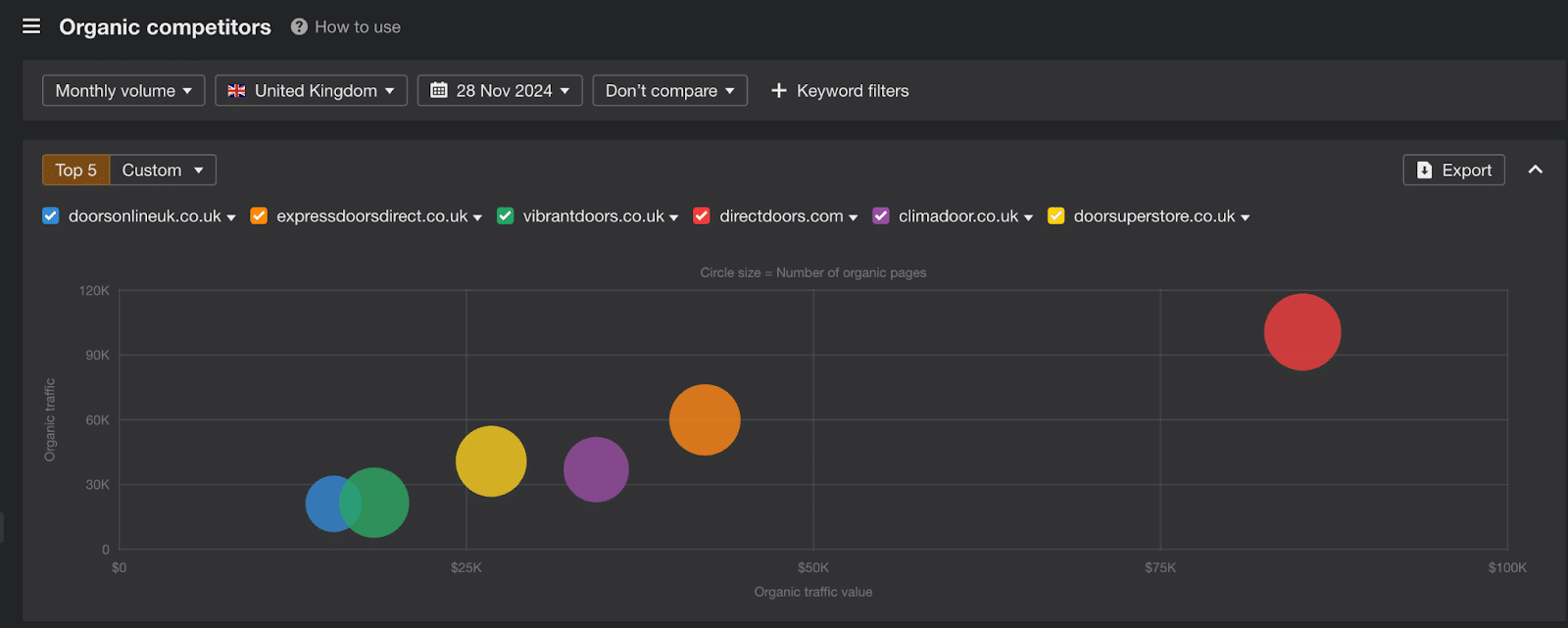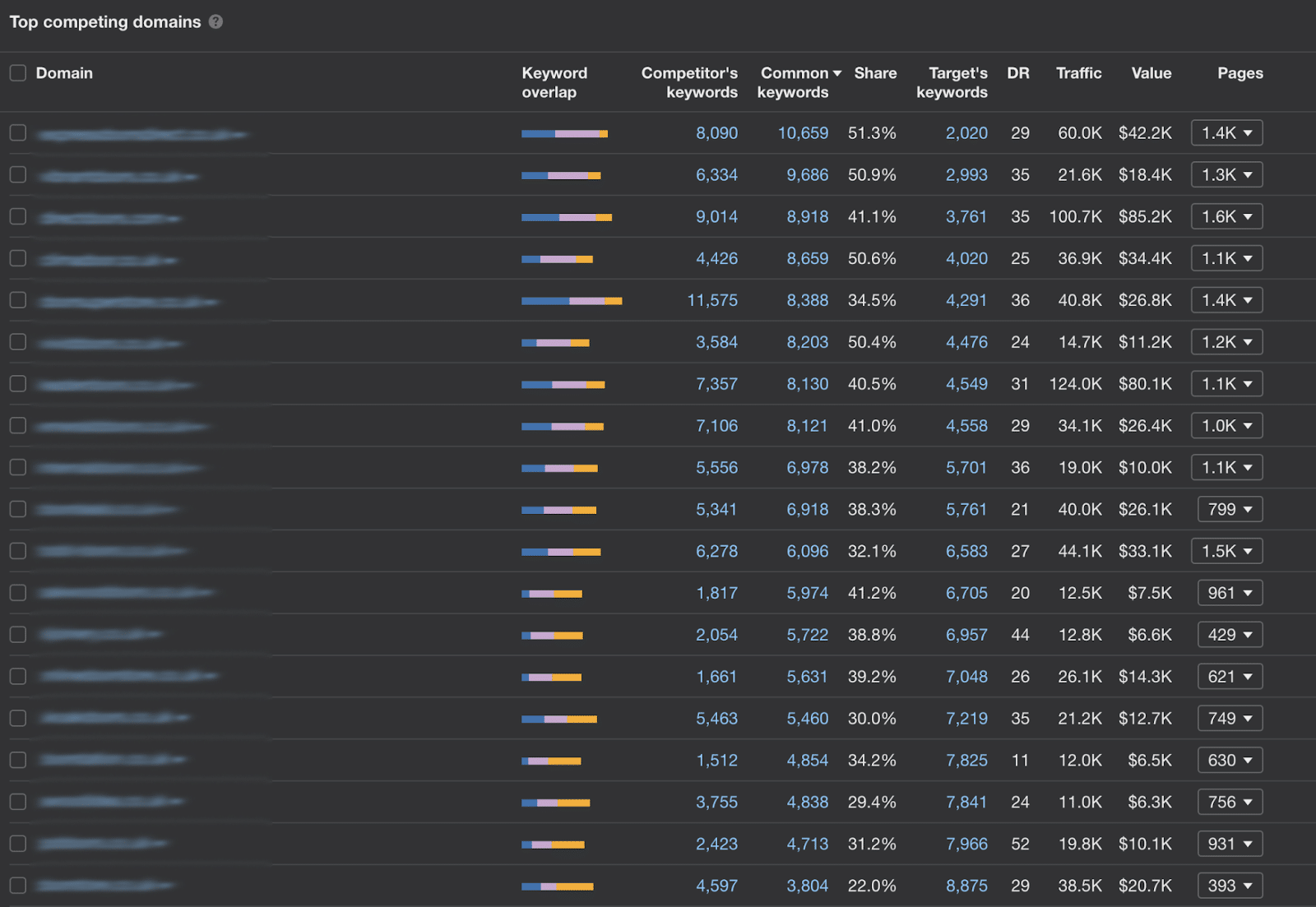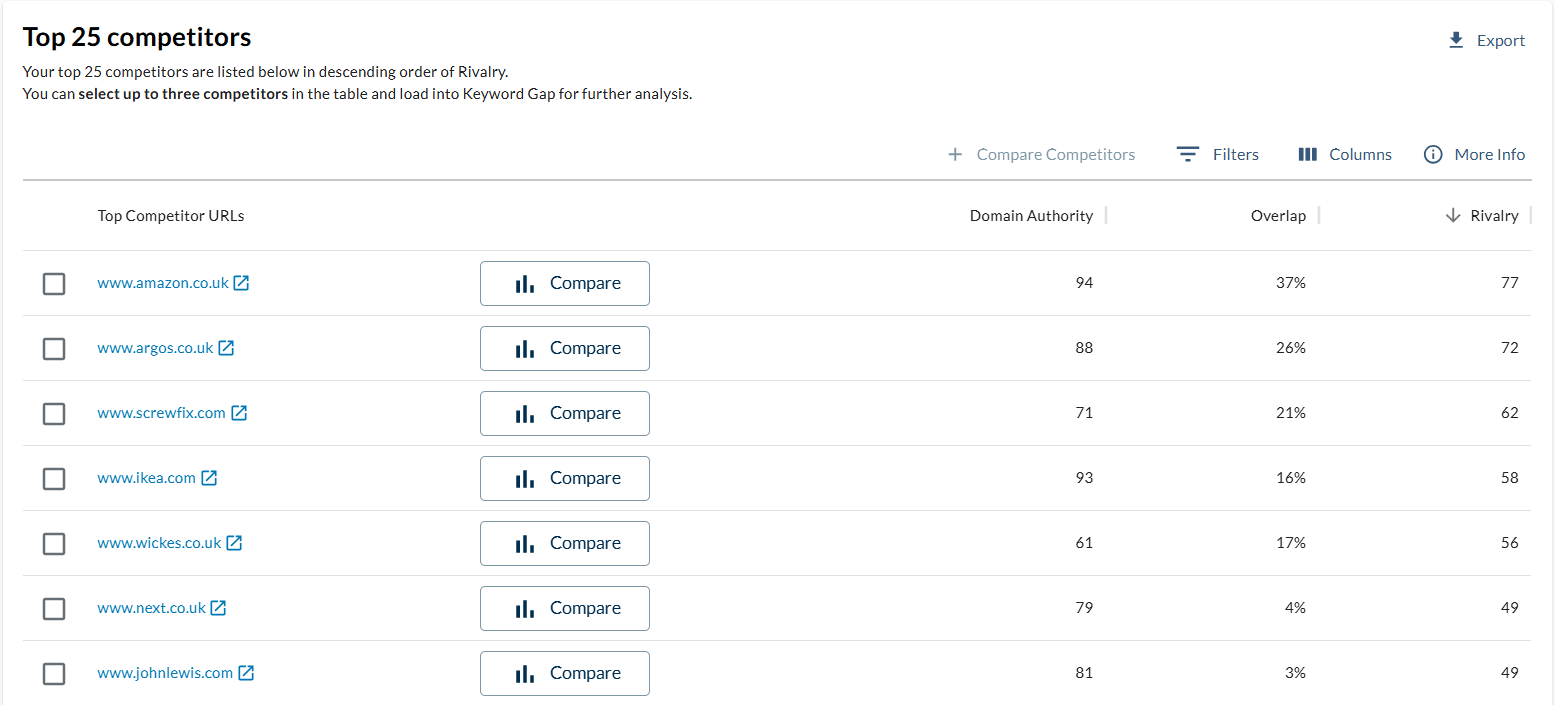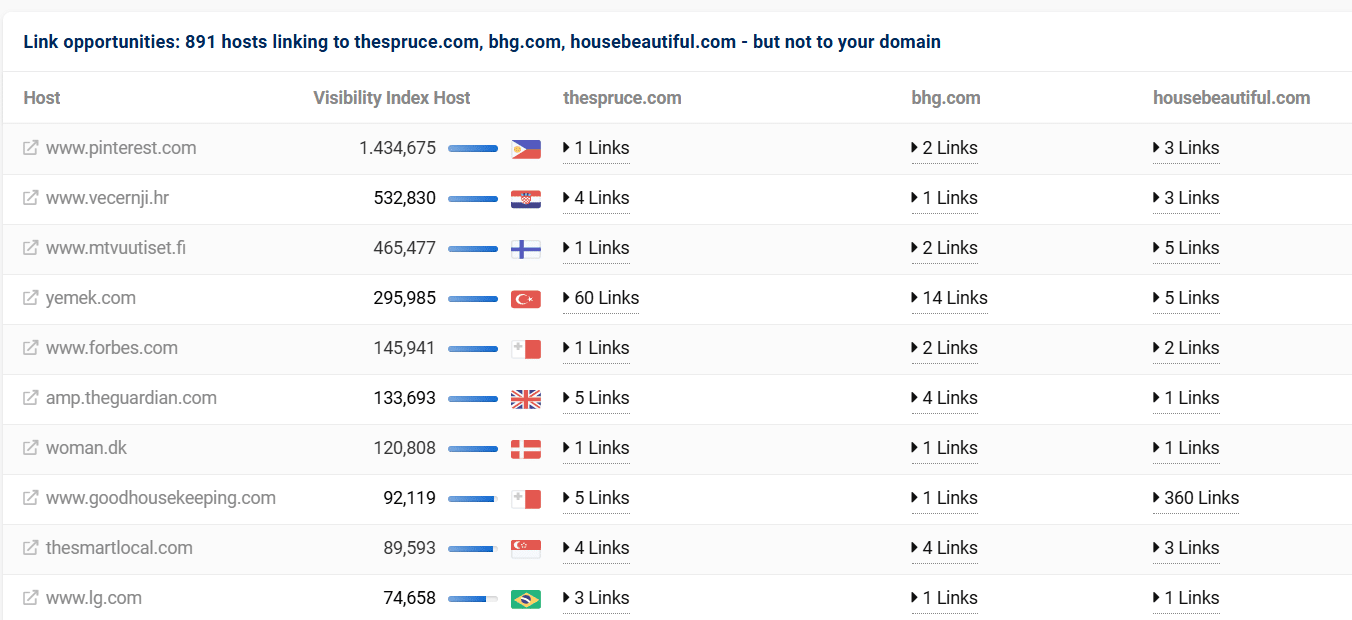
To succeed in the SERPs, understanding your competition is essential.
While analyzing your SEO rivals might seem daunting, it’s a surprisingly straightforward and rewarding process.
With a wealth of insights just waiting to be uncovered – and your competitors none the wiser – it’s time to go into stealth mode and discover strategies to help you outshine them.
Identify your SEO competitors
The first step in a competitive analysis is to discover who you’re against in the search engines.
It might not always be who you’d expect based on brick-and-mortar competition or even what you think you know about others in your space.
You can start SEO competitor research right in the SERPs by checking your most important keywords and assessing who is already ranking well.
This is simple but can be time-consuming and might not give you the whole picture.
A much faster and more effective way to get an overview is to use SEO competitor analysis tools like Semrush, Ahrefs, Sistrix or Moz for competitor discovery.
These tools make it simple to find the competitors with the biggest keyword overlap, indicating that they are likely to sell similar products or create comparable content.

You’ll need to run a domain overview analysis on your website using your preferred tool.
Navigate to the Competitors menu to see who uses similar keywords and targets comparable audiences.

Using this information, you can create a list of your top SEO competitors.
Think about both relevance and domain strength, which the tools can inform you on.
Dig deeper: Advanced ways to use competitive research in SEO
Keyword strategies
Once you have your competitor list, you can start to investigate what’s driving their SEO success.
The best place to begin is by looking at the keywords they’re ranking for.
Top-performing keywords
Look into the keywords your competition ranks for and assess what brings them the most traffic.
Use this information conscientiously rather than rushing to replicate what you see.

Ask yourself questions like:
- Does our product offering really stand up to theirs?
- What does our range have that theirs doesn’t?
- Can I honestly create content that’s more informative than theirs?
- Can I add insight or expertise that theirs is lacking?
The idea behind analyzing keyword rankings isn’t to mimic the competition.
It’s to understand where you can compete, the opportunities you might be missing or strategies you may not have considered.
If you’re objective, smart and honest with your decisions, your efforts are more likely to pay off.
Dig deeper: Advanced SEO: How to level up your keyword strategy
Keyword gaps
Another treasure trove of information is a gap analysis, which compares where you rank for the same keywords as your competition and where you find gaps.
You might discover relevant keywords that you hadn’t considered, or areas your competitors rank for that can inform new product ranges or inspire content ideas.
A keyword gap analysis can also help you to address areas that are underperforming yet have plenty of potential.
Content strategy
While reviewing target keywords can tell you a lot, it’s also important to assess competitors’ domains from a content perspective.
One really successful piece of content could rank for a whole host of keywords with a moderate amount of traffic, but add that all together and it’s a real winner.
Looking only at a keyword level, you could miss the impact certain content is having.
To do this, you’ll need to look at top-ranking pages rather than just keywords.
You’ll get a feel for content themes that drive traffic. This may foster ideas or highlight your existing content that could be performing better.
Content quality
Alongside the content strategy, you should also compare the quality of competitors’ content.
Are they writing really insightful pieces? Are they using imagery, video or other multimedia in creative ways?
Or are they creating basic content using AI that you can easily better with some human emotion and insight?
Your review might reveal content ranking in search results simply because no better option exists. This is an opportunity for you to create something far more meaningful and valuable.
Don’t stop at uncovering which content works; dive into what’s good and bad about it, too. That’s where your opportunities will lie.
Dig deeper: Mastering content quality: The ultimate guide
Backlinks
Assessing your competitors’ backlink profiles in relation to your own allows you to see your site’s authority relative to your competition.
On a high level, you can use SEO tools to access an authority score and see how you stack up.

A competitor backlink analysis can go much deeper than this, though.
You can review competitors’ backlinks to learn more about:
- How they build quality links.
- Where they get them.
- Whether you could work with them, too.

You might also contemplate the type of sites linking to the competition. Check if there are niches or types of publications that you haven’t considered.

Backlink gaps can be important, too.
If certain sites link to many of your main organic competitors but not to your site, you may want to secure a similar backlink.
Building quality links is rarely simple, but gaining insight into what works for others can help open up new avenues for exploration.
Technical SEO
Just like you audit your own website to uncover technical issues, you can use SEO tools to glean similar information about your competition.
This helps you benchmark your technical SEO performance against your search competitors and identify areas you need to work on.
Perhaps a competitor’s domain is faster than your site, or they’re using structured data in ways you aren’t.
Your competitors’ strengths may highlight areas for you to work on. But you might also pick up on their weaknesses and uncover ways to give you an edge.
On-page factors
One of the simplest ways to improve your search engine rankings is to ensure that all your on-page SEO is spot on.
Title tags
- Are your title tags as engaging, relevant and well-optimized as your SERP rivals?
- Look at keyword positioning, length and formatting.
- Seeing what’s working for others at scale might open your eyes to what’s most powerful in your industry.
Meta descriptions
- While meta descriptions won’t directly influence your rankings, comparing these with competing websites will help you to understand whether you’re writing compelling copy that encourages click-throughs.
URL structure
- Are your URLs as clear, descriptive and organized as your competitors’?
- Are there any simple improvements you could make to match or better your top competitors’ URLs?
Internal linking
- How does your internal linking structure compare to your organic adversaries?
- Is theirs better (or worse) at helping Google and users find content and navigate your site?
- Who is better at passing backlink value between pages?
External linking
- While this might not be at the top of your priority list, it can be interesting to consider who your competitors are linking to.
- Do they excel at providing links to authoritative sources to back up their claims and statistics or provide additional value?
E-E-A-T
- Evaluate the E-E-A-T factors on competitors’ pages. What are they doing to demonstrate their experience, expertise and authority and inspire trust?
- Consider whether your website shows similar strengths or if there’s room for improvement.
- Think about what sets your business apart, such as unique expertise or specialized experience others lack.
- Once you’ve identified your strengths, highlight them online.
- For example, add author bios to showcase your experts or clearly indicate when content has been fact-checked by industry leaders.
SWOT analysis
To make sense of your findings, consider creating a SWOT analysis to compare your strengths, weaknesses, opportunities and threats against your competition.
Focus on key SEO components. Some competitors may excel at backlinks, others at content or technical optimization.
This analysis helps you identify areas to improve and decide whether to leverage your strengths or address weaknesses where competitors outperform you.
It’s important to be realistic. For instance, a small or medium-sized business may struggle to match the backlink profile of a household name.
Instead, you could focus on ranking with superior content, deeper expertise and a targeted approach.
Dig deeper: SEO SWOT analysis: How to optimize where it counts
Time-saving tips for fast competitive insights
If you’re short on time or focused on a specific task, here are some quick ways to learn from top-performing competitors in the SERPs.
Look at one area only
- Sometimes, it’s better to focus on a specific section or set of pages rather than your entire website.
- For example, if you’re launching a new product range, you can do a quick competitor analysis covering this area in isolation.
Reverse engineer
- Have a content idea but unsure if it will work? Check who ranks for it and use an SEO tool to see their traffic and top keywords.
- Refine, validate or scrap your idea based on the results.
Regular snapshots
- After understanding your competition, make regular checks to quickly spot and respond to changes.
- This is particularly important after a core update or if your industry or business is experiencing major changes.
Using competitor data to inform your strategy
Improving your search engine results starts with learning from what works for others.
Analyzing your competitors can uncover valuable insights into your strengths and weaknesses and identify opportunities you may have missed.
To boost your organic traffic, you need to learn from the top performers who already rank well. Make the most of the data at your disposal to inform your strategy.
With thorough analysis, careful evaluation, and consistent effort, you can make meaningful changes that improve your site’s performance and help you surpass your competitors in the rankings.
Dig deeper: Entity-based competitor analysis: An SEO’s guide
source https://searchengineland.com/analyze-seo-competitors-448886

0 Comments